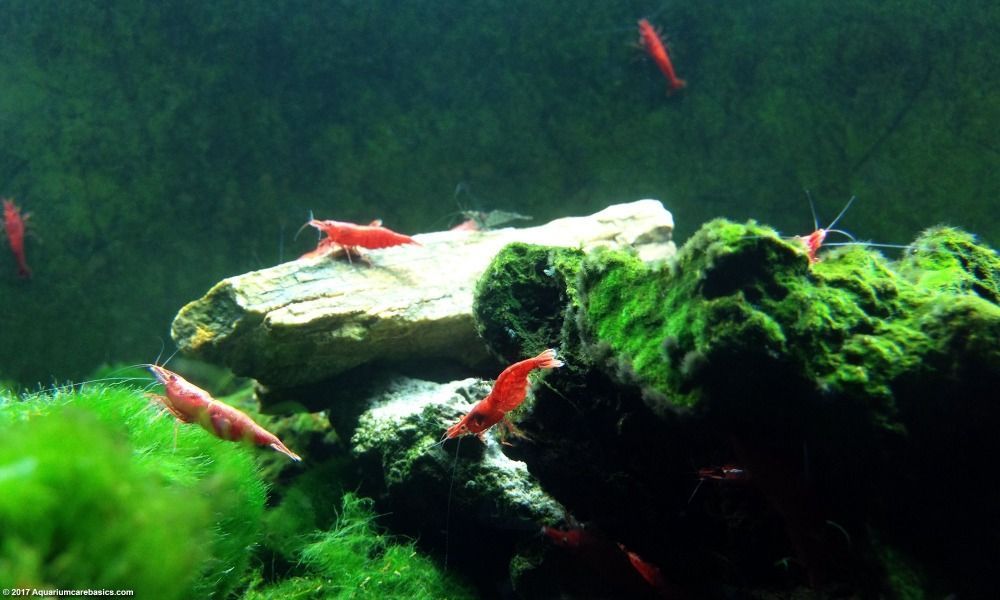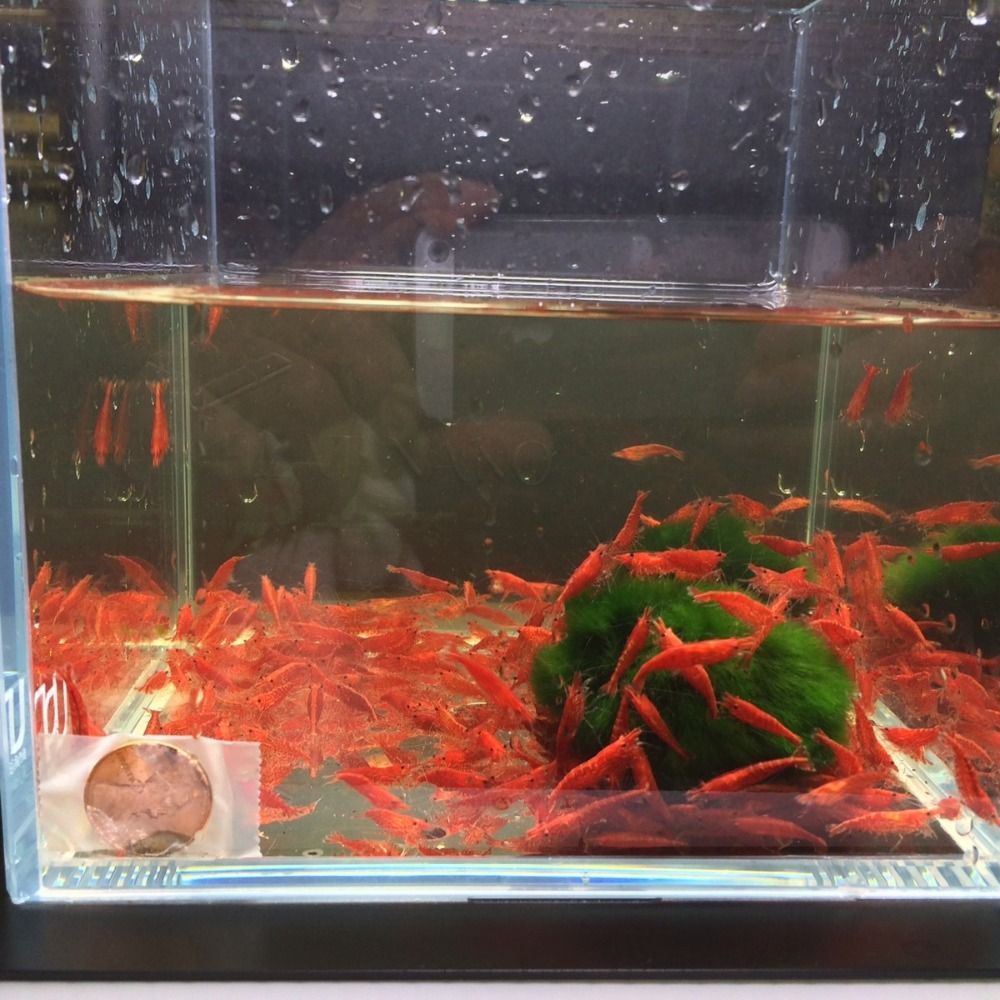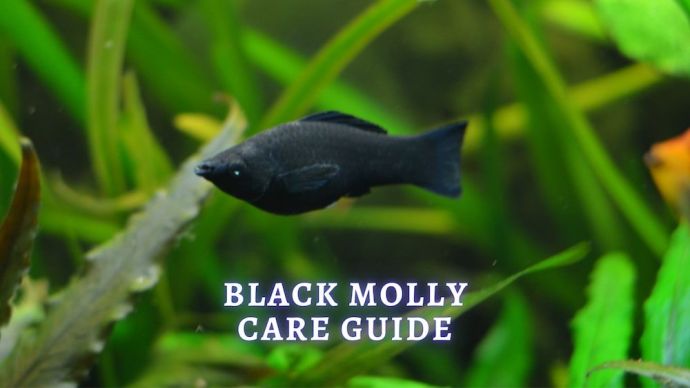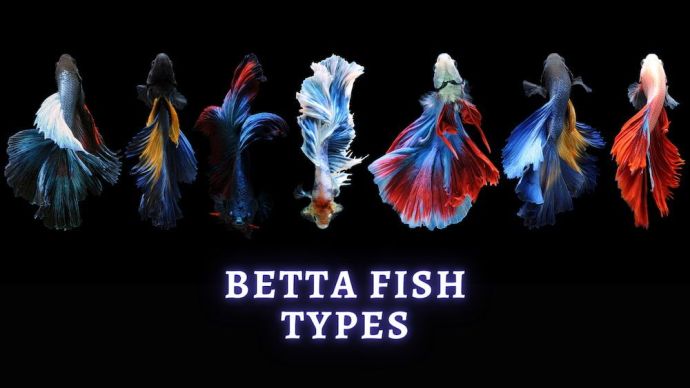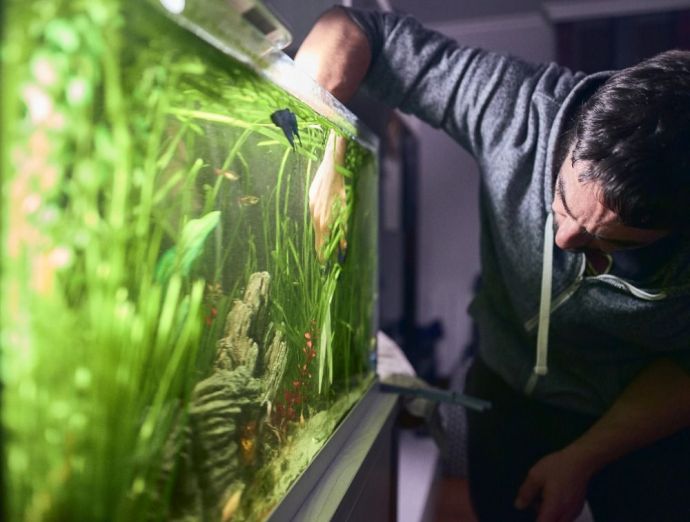Cherry Shrimp: Facts, Feeding, Tank Mates, and Behavior
Written by:
Author: Vicki Smirnova
Vicki Smirnova is a professional writer and editor who adores animals and helps readers get along well with their pets. She has been working in digital media for more than 5 years and has great experience writing content about lifestyle, including pets. Vicki specializes in dog health and nutrition, cat feeding, dog training. She is an aquarium lover and is passionate to write about fish care at home. Also, Vicki headed several websites and worked as a news editor.
View all 245 articlesLearn about our editorial process and veterinary review board.
Viewed: 389
Updated on: 03/12/2021
Cherry shrimp are the most typical representatives of freshwater shrimp species in the world. Their popularity is the simplicity, ease, speed of reproduction, and the brightness of the color.
Cherry shrimp is an artificially bred form of the wild species Neocaridina heteropoda, which lives in the freshwaters of Taiwan. Representatives of the natural way are almost transparent, having only small spots and stripes on the carapace. But Asian breeders were able to breed representatives with color from bright orange to dark red, blue, and even black. Female cherry prawns are usually more colorful, fuller, and larger than males.
Environmental Conditions
Cherry shrimp are gregarious animals that feel calm and at ease only in a group with at least a dozen individuals. Single or few shrimps will hide in the thickets so well that you are unlikely to see them.
To keep a flock of these shrimp requires an aquarium of 1.5 gallons (for ten individuals). An 8 gallons container can accommodate about a hundred of these crustaceans. Cherry shrimp can live at a water temperature of 68-78°F. The main thing is that the water should not be too soft; otherwise, the shrimps will not be able to form full-fledged shells.
At the same time, cherry shrimp do not tolerate high levels of nitrogen compounds. Ammonia and nitrites are deadly to them, even in minimal concentrations. The content of nitrates is allowed up to 1.3 fl oz per 0.2 gallons in the aquarium; there must be high-quality biofiltration and regular water changes.
An essential condition for a comfortable stay of cherry and any other shrimp is the presence of many living plants in the aquarium. Shrimp likes moss and ferns. It is okay if there are floating plants on the surface of the water. It would be good to have shelters in the reservoir, specifically for these invertebrates. Usually, this is done using small-diameter ceramic tubes.
Compatibility of Cherry Shrimp with Fish
You can keep cherry shrimp in the same aquarium with small fish. With such neighbors, shrimp feel quite comfortable, but you need to be prepared for the fact that part of the newborn shrimp will become fish food.
In the aquarium, cherry shrimp can live together with gymnocorymbus, cardinals, and other small fish. It is important to remember that a particular place should be organized for crustaceans, fenced off by a snag, with small twisted shells, and abundantly planted with moss and ferns. Fish in such a place will almost not swim, and cherry shrimp will be able to live and reproduce in peace.
READ MORE: Gourami Tank Mates
Transportation and Adaptation of Shrimp to a New Aquarium
Moving to a new aquarium is significant stress for cherry shrimp. When transporting in a bag with cherry shrimp, it is necessary to put a bunch of moss or twigs of an aquarium plant. The shrimp will be able to grab onto them and will not suffer from shaking during transport.
You need to gradually transfer them to the water of your aquarium, at least for an hour. You will first need to lower the package into the aquarium and wait until the temperature equalizes.
In the first minutes after cherry shrimp move in a new aquarium, they usually behave very actively, swimming in all layers of water. But this is more of a panic than a joy. After half an hour, all of them will hide in the thickets of plants, behind stones and under shells, where they will be for the next 2-3 days of adaptation.
Shrimp shed after suffering stress. Until they have a new shell, the shrimp will hide. But after a while, they will crawl out and begin to take an active part in the life of the aquarium.
Feeding
In an aquarium with fish and live plants, it is not necessary to feed the shrimp; they only need the remains of fish food, algae fouling, and detritus. You can sometimes feed them with specialized shrimp feed or catfish sinking tablets with spirulina.
The feed should be lowered into the thickets of plants and moss. So, the fish do not have time to eat all the food before the shrimp.
Reproduction
Reproduction of cherry shrimp is not difficult and does not require any effort from the owner of the aquarium. If the aquarium’s conditions are close to optimal, the reproduction of cherry shrimp will be active.
It is effortless to understand that a female shrimp is pregnant. First, a bright yellow or yellow-green area with caviar is formed on the back under the carapace. After fertilization, the eggs move under the abdomen, where they remain until hatching. The female can periodically shake the eggs to ensure their healthy development. Caviar can have different colors: yellow, green, and even bluish-gray.
Small shrimp are born from the eggs after 2-3 weeks, already fully formed. They eat the same way as adults: leftover food that lies at the bottom, so their feeding will not be a problem. In the right conditions, a female cherry shrimp can become pregnant up to 10 times in a year, and each new individual begins to reproduce from about two months of age. So very soon, cherry shrimp can completely fill the aquarium.
Behavior
Cherry shrimp are entirely harmless, and if you see them eating fish, it is the result of natural death, and the shrimp only eat the body.
They are active throughout the day, and you can see them moving around the plants and decor in search of food.
Regularly, cherry shrimp shed, and the empty shell lies on the bottom or even floats in the water. You do not need to be afraid; molting is a natural process, as the shrimp grow and their chitinous suits become tight. It cannot be removed; the shrimp will eat it to replenish the stock of substances.
READ MORE: Fish Compatible with Guppies
Despite their relative unpretentiousness, cherry shrimp are fragile creatures, and a sharp change in conditions is disastrous for them. It is better to buy young shrimp, as it is easier for them to adapt to new aquarium conditions. It is desirable to take a dozen to be sure that you have both males and females.
It is important to note that, like most freshwater invertebrates, cherry shrimp are extremely sensitive to copper (may be found in medications for the treatment of aquarium fish).
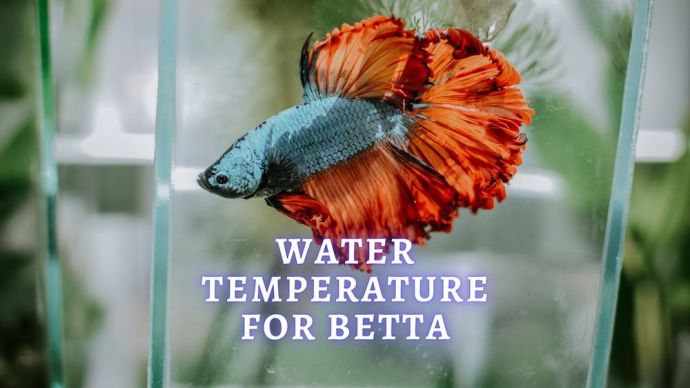 Freshwater Fish Betta Fish Temperatures: Guide To The Perfect Betta Fish Water Temperature
Freshwater Fish Betta Fish Temperatures: Guide To The Perfect Betta Fish Water Temperature - 126
- 0
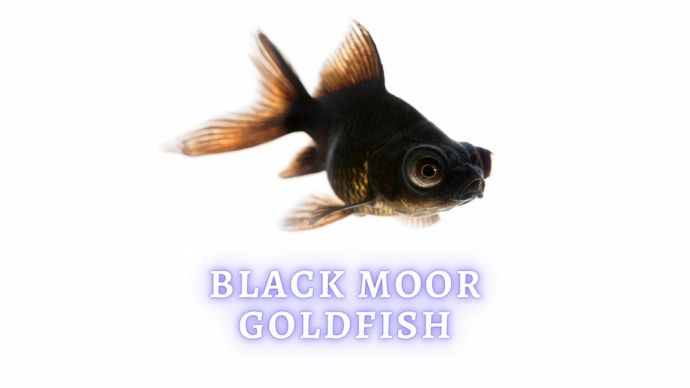 Freshwater Fish A Guide to the Black Moor Goldfish: Tank Setup, Temperatures and Care Routine
Freshwater Fish A Guide to the Black Moor Goldfish: Tank Setup, Temperatures and Care Routine - 93
- 0











